INDIAN ARMED FORCES CHIEFS ON
OUR RELENTLESS AND FOCUSED PUBLISHING EFFORTS

SP Guide Publications puts forth a well compiled articulation of issues, pursuits and accomplishments of the Indian Army, over the years

I am confident that SP Guide Publications would continue to inform, inspire and influence.

My compliments to SP Guide Publications for informative and credible reportage on contemporary aerospace issues over the past six decades.
Versatility & Performance
Combining a proven design with modern technology, the Viking DHC-6 Twin Otter Series 400 provides the best-selling 19 passenger aircraft of all time, unmatched for its dependability and versatility
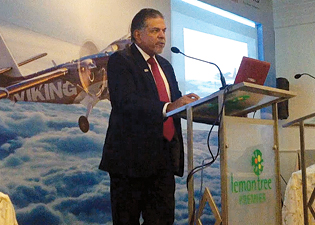 | 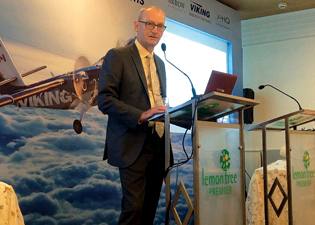 | |
| Rohit Kapur, Managing Director, Arrow Aircraft | Dan Tharp, Chief Operating Officer, Viking Aerospace | |
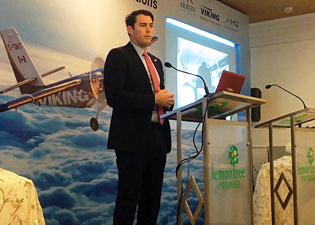 | 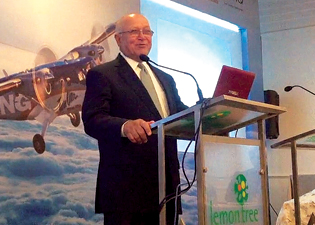 | |
| Garett W. Jerde, Managing Director, JetHQ | Ted Farid, Chairman, JetHQ |
Things are happening in the Indian aviation sector. With the launch of ‘UDAN’, the regional connectivity scheme, a Ministry of Civil Aviation initiative to connect smaller cities in India and to get more and more people to fly from Tier-II and Tier-III cities, the government has shown its seriousness about promoting the aviation sector in India. This is giving the necessary impetus to many foreign aviation companies to look at India as a serious and highly potential market for themselves. One such company who has decided to come back to India is Viking Air, the manufacturers of the legendary “Twin Otter” series of small aircraft. Viking is offering their well-known DHC-6 Series 400 Twin Otter aircraft through JetHQ and Arrow Aircraft, their distributors for India, for connecting India’s unserved and underserved cities. Announcing their comeback, top officials from Viking Aerospace, JetHQ and Arrow Aircraft met with government officials, operators and other stakeholders to highlight the features and versatility of Series 400 Twin Otter.
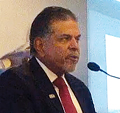 The present environment is the most exciting time that I have seen in the last one decade in civil aviation sector. We have a government that is fully focused on making air connectivity dream a reality and getting into the remote areas. There is a very strong case for 19-seat or less aircraft for regional and remote connectivity.
The present environment is the most exciting time that I have seen in the last one decade in civil aviation sector. We have a government that is fully focused on making air connectivity dream a reality and getting into the remote areas. There is a very strong case for 19-seat or less aircraft for regional and remote connectivity.
— Rohit Kapur, Managing Director, Arrow Aircraft
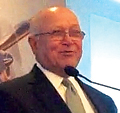 The Twin Otter is very unique, very versatile airplane and is ideally suited for certain missions. Both the land and the sea version can be used in this market, particularly now with the Prime Minister Modi’s focus on promoting regional and remote connectivity.
The Twin Otter is very unique, very versatile airplane and is ideally suited for certain missions. Both the land and the sea version can be used in this market, particularly now with the Prime Minister Modi’s focus on promoting regional and remote connectivity.
— Ted Farid, Chairman, JetHQ
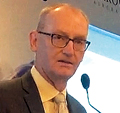 The vibe here in India now is unlike anything that I have seen over the last 5 years. It is a great thing to see the connectivity that is going on in this country. It is going to bring much needed services to remote areas all across the country which is a great cause to be involved in.
The vibe here in India now is unlike anything that I have seen over the last 5 years. It is a great thing to see the connectivity that is going on in this country. It is going to bring much needed services to remote areas all across the country which is a great cause to be involved in.
— Dan Tharp, COO, Viking Aerospace
 We are really, really excited about India. There is a buzz, everybody is talking about remote connectivity. We feel, as representatives of Viking Aerospace, that we have a special product for India to bring to this country to serve, which is ideally suited for the Prime Minister Modi’s idea of connecting the country.
We are really, really excited about India. There is a buzz, everybody is talking about remote connectivity. We feel, as representatives of Viking Aerospace, that we have a special product for India to bring to this country to serve, which is ideally suited for the Prime Minister Modi’s idea of connecting the country.
— Garett W. Jerde, Managing Director, JetHQ
Welcoming Viking Aerospace to India, Rohit Kapur, Managing Director of Arrow Aircraft, said: “We thought it was a very good time to present this product to the stakeholders. The present environment is the most exciting time that I have seen in the last one decade in civil aviation sector. We have a government that is fully focused on making air connectivity dream a reality and getting into the remote areas. There is a very strong case for 19-seat or less aircraft for regional and remote connectivity. In time as the market develops, the routes will open up and you will require larger capacity aircraft but initially, this is the way to go, especially for the remote areas. Also, sea plane is the way to go in India. Vast coastlines, islands which are remotely connected, constraints on land for making airports, there is a huge potential.”
Ted Farid, Chairman, JetHQ and an aviation industry veteran related to his association with Viking. “Almost two years ago, we had the opportunity to talk to Viking Air to represent them here for the Indian subcontinent. The Twin Otter is very unique, very versatile airplane and is ideally suited for certain missions. Both the land and the sea version can be used in this market, particularly now with the Prime Minister Modi’s focus on promoting regional and remote connectivity.”
The Legacy
In 1965, de Havilland Canada developed the DHC-6 Twin Otter aircraft – a high winged, un-pressurised twin-engine turbine powered aircraft with fixed tricycle land gear. Designed as a rugged short take-off and landing (STOL) commuter, the Twin Otter was capable of carrying passengers and cargo to remote unimproved locations, including ski and water-based operations. The aircraft were sold around the world to customers operating in the harshest environments. A testimony to its rugged construction and incredible STOL performance, the Twin Otter became the best-selling 19 passenger aircraft of all time, unmatched for its dependability and versatility.
In 2005, Viking purchased the Type Certificates for all of the out-of-production de Havilland aircraft (DHC-1 through DHC-7), including the Twin Otter. It was determined that an overwhelming demand for the Twin Otter existed and thus the Viking Series 400 Twin Otter Production Program was announced in 2007. The first production aircraft was delivered in 2010 and by mid-2015, 75 of the new series had been delivered.
DHC-6 Series 400 Twin Otter
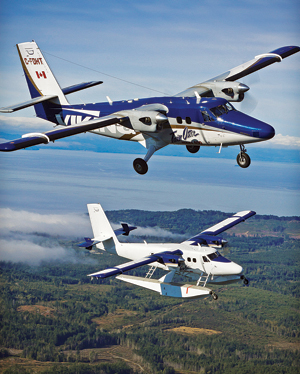
(Standard landing gear and floats)
The Series 400 Twin Otter picks up with an upgraded Pratt & Whitney PT6A-34 engines, fully integrated Honeywell Primus Apex digital avionics suite, internal and external LED lighting, and approximately 800 other modifications incorporated to improve upon the original production model. One of the biggest changes from the series 300 to the Twin Otter Series 400 is the avionics.
Available on standard land gear, optional straight or amphibious floats, skis, wheel skis, or intermediate flotation gear (IFG), with multiple quick-change interior configurations available, the Series 400 Twin Otter is a versatile aircraft that can be utilised for multiple roles, such as regional commuter, environmental monitoring, parachute operations, cargo and infrastructure support, corporate shuttle, and personal use.
A Special Missions variant of the Series 400, the Twin Otter Guardian 400, has also been developed for ISR operations. Offered as a versatile airframe that can be customised for unique configuration requirements, the Guardian 400 allows operators to mix and match sensors and interior layouts to meet their specific mission profiles.
Presenting the features and versatility of DHC-6 Twin Otter Series 400, Garett W. Jerde, Managing Director of JetHQ, mentioned, “We are really, really excited about India. There is a buzz, everybody is talking about remote connectivity. We are getting to know more about regional connectivity, remote connectivity. We feel, as representatives of Viking Aerospace, that we have a special product for India to bring to this country to serve, which is ideally suited for the Prime Minister Modi’s idea of connecting the country.” Elaborating on the current status, he added, “We met with the DGCA and we are under the process of certifying the platform in India and we should have that by the end of the year.”
Sanjeev Choudhary, President – Business Development at Arrow Aircraft, shared different cases with direct operating costs on various unserved or underserved routes with different passenger loads depending upon the landing gear used on the Twin Otter. This gave the operators present a very good idea on the cost-effectiveness of the aircraft and how they could use them to operate on these sectors profitably. He said, “We have a policy and we have a need. We have an aircraft that can land on table-top, short airstrip, which can land on the beach, which can land on a ploughed field but we need to look at the economics of it.”
Service and Support
One of the reasons for the success and long-life of Viking planes around the world is because they work very closely with their customers, no matter where they are located. Viking is extending all possible support to operators in India including putting them in touch with operators around the globe so that they can learn from the experience of others and incorporate “best practices” into their operations. Full training, technical support, MRO and spares support is also provided.
Reaching out to the operators, Dan Tharp, COO, Viking Aerospace, said, “In the last five years the total number of staff employed by Viking in their manufacturing facilities has gone up from 60 to 600 people with 12 service centres located around the world. We have spent great amount of time developing remote routes throughout the world. We have done this project on a grand scale several times around the world now. We have the expertise and are happy to send our staff over to help you put together your business plan.”
Outlook for India
According to Dan Tharp, “I have been to India about five times over the last four years. The vibe here in India now is unlike anything that I have seen over the last five years. It is a great thing to see the connectivity that is going on in this country. It is going to bring much needed services to remote areas all across the country which is a great cause to be involved in.”
“It seems that the stars are aligning for our re-entry into the Indian market. The new government in India has clearly shown interest in developing the aviation sector in India, the new Regional Connectivity Scheme has been launched and Viking Twin Otter is the best aircraft in the world to operate economically, safely and reliably from remote and unimproved airfields,” said Peter Walker, Regional Sales Director of Viking. “We are very optimistic about the Indian market as the Twin Otter is a proven and dependable aircraft. We are looking at having at least 100 of them in India by 2020.”
Viking might be looking at an optimistic target for DHC-6 Series 400 Twin Otter in India, but given the versatility of the aircraft and the minimal infrastructure required to operate, it just might take-off as the RCS gains traction in India.





